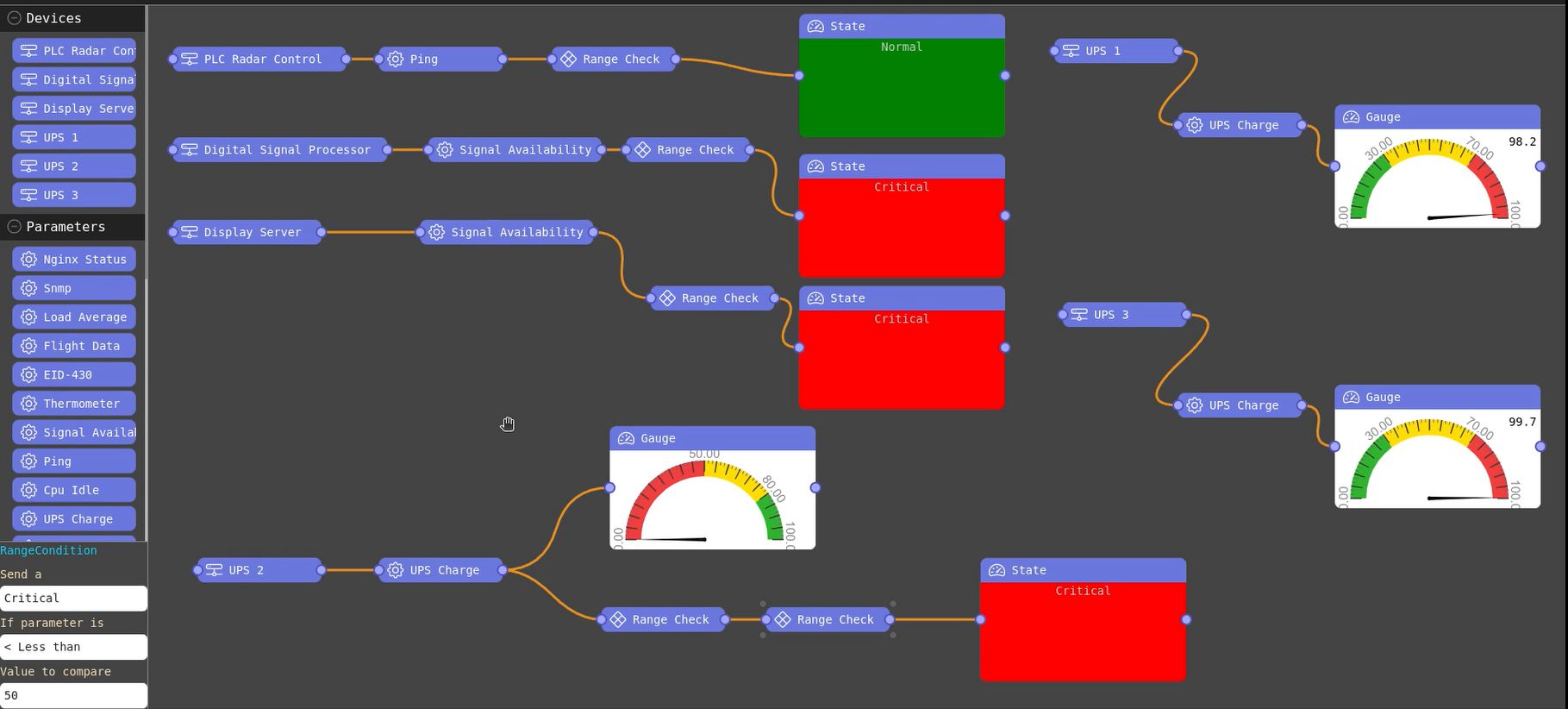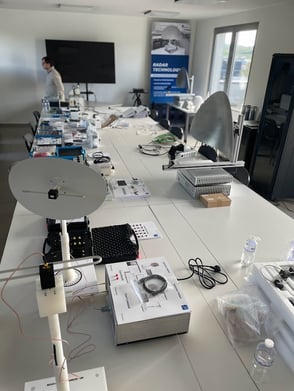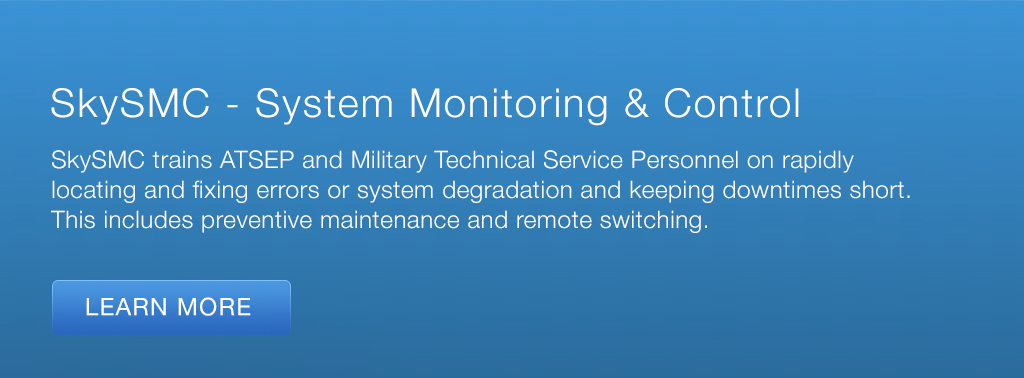A digital tower is a concept that allows the provision of aerodrome air traffic services (ATS) from any location using digital means. Instead of relying on visual control rooms and human eyesight, digital tower technologies utilize digital cameras and sensors to capture surveillance of the aerodrome and transmit the images over a digital network to operators who view them on screens. The goal is to provide ATS from a remote location, centralizing resources and enabling more flexible operations.
Regulatory Framework
The primary regulatory document relevant to European air traffic that specifies, standardizes, and regulates digital virtual towers is the "Regulation (EU) 2017/373 laying down common requirements for providers of air traffic management/air navigation services and other ATM network functions and their oversight" (also known as the "ATM/ANS Regulation"). This regulation, issued by the European Union, establishes the common requirements for air traffic management (ATM) and air navigation services (ANS) providers, including the provision of remote and digital tower services.
The ATM/ANS Regulation sets the legal framework for the deployment and operation of digital virtual towers within the European Union. It outlines the general principles, safety requirements, and performance objectives that ANSPs must comply with when providing ATS and related services, regardless of whether they are conventional or remote operations. While the regulation does not specifically address digital virtual towers, it provides the foundation for their implementation and operation by establishing safety and operational requirements applicable to all types of ATS.
In addition to the ATM/ANS Regulation, there are supporting documents and guidance materials provided by the European Union Aviation Safety Agency (EASA) that specifically address remote aerodrome ATS, including digital towers. One such document is the "EASA Remote Aerodrome ATS Guidance Material (GM) Issue 2" (February 2019), which offers detailed guidance on the application of the ATM/ANS Regulation in the context of remote aerodrome ATS. This document provides specific guidance on safety assessments, operational procedures, and validation requirements for remote and digital tower implementations. Another one providing a good introduction as well as use cases is the document "CANSO Guidance Material for Remote and Digital Towers".
Standards and Compliance
The EUROCAE Standard ED-240A, titled "Minimum Operational Performance Standards for Remote Tower Systems," plays a significant role in the development, standardization, and certification of remote tower systems, including digital virtual towers. EUROCAE (European Organization for Civil Aviation Equipment) is a European standards organization that develops and publishes technical standards for the aviation industry.
ED-240A provides minimum operational performance standards (MOPS) for remote tower systems, which are used as a reference for the design, development, and evaluation of remote tower solutions. The standard defines the functional requirements, performance criteria, and operational capabilities that remote tower systems should meet to ensure their safe and effective operation.
By defining the MOPS for remote tower systems, ED-240A serves as a benchmark for manufacturers, ANSPs, and regulatory authorities involved in the implementation and certification of remote tower solutions. It provides a common reference point and a basis for assessing the compliance and performance of remote tower systems.
The standard covers various aspects of remote tower systems, including system architecture, sensor technologies, data transmission, display systems, control interfaces, human-machine interfaces, and system safety. It addresses key operational functions, such as visual display, surveillance, communication, integration with other ATM systems, and contingency management.
Compliance with ED-240A is typically required during the certification process for remote tower systems. Manufacturers and system providers need to demonstrate that their solutions meet the performance and functional requirements outlined in the standard. This certification process ensures that remote tower systems adhere to recognized industry standards and are capable of providing the necessary level of safety and operational performance.
Overall, ED-240A plays a crucial role in promoting interoperability, harmonization, and safety in the development and deployment of remote tower systems, including digital virtual towers. It provides a framework for the industry to ensure consistency, reliability, and compliance with established performance standards for remote tower operations.
Background
The concept of digital towers began to take shape in the early 2000s and underwent further development through international research programs. Sweden implemented the first fully operational digital tower based on international standards in 2015. Initially, the concept targeted low-density aerodromes with the aim of achieving cost efficiency and flexibility in providing air traffic services (ATS).
Digital towers can be implemented in various operating modes and applications, including air traffic control, aerodrome flight information services, and apron control services. They are suitable for aerodrome operations of all sizes and offer not only cost efficiencies but also societal and economic benefits, such as enhanced service delivery, safety improvements, and increased capacity.
Operating Modes and Technical Enablers
Digital towers operate in different modes depending on the specific requirements and operating environment. The core operating modes include single mode, multiple mode, and contingency mode. In single mode, ATS is provided from one digital tower facility to a single aerodrome. Multiple mode operations involve providing ATS to two or more aerodromes simultaneously from one digital tower facility. Contingency mode refers to the provision of ATS when the primary ATS facility is unusable. Digital tower technologies can also be incorporated into conventional tower operations to enhance existing practices.
Technologically, digital towers rely on high-quality visual sensor presentations. This includes optical sensor presentations, virtual presentations, and augmented optical sensor presentations. Additional technical enablers include binocular functionality, signaling lamps, aerodrome sound reproduction, communication devices, management of navigation aids, and various other ATS functions and systems. Enhanced features such as visual overlays, multiple optical sensors, visual tracking, and radar data integration can improve situational awareness and aid in conflict detection.
Configuration and Co-location
The configuration of digital tower facilities depends on various factors, including the number of operators, the specific visual requirements of each role, and the operational mode provided. Different configurations are considered for single operator scenarios, multiple operators, multiple aerodromes, operations within a conventional tower, and digital tower centers. Co-locating digital towers for multiple aerodromes in one facility, known as a remote tower center, allows for resource sharing and cost efficiencies.
Benefits of a Digital Virtual Tower
Cost Advantages
The implementation of a digital virtual tower offers numerous benefits to various stakeholders. One significant advantage is cost efficiency. Digital towers enable the efficient use of resources by providing ATS from a facility that offers optimal resource allocation. This leads to potential savings in staffing, operational expenditure, maintenance costs, and equipment. By centralizing ATS resources and sharing them among co-located aerodromes within a digital tower center, further cost reductions can be achieved. Additionally, installing a digital tower at a new airport eliminates the need for constructing a physical tower, resulting in substantial capital expenditure savings.
Flexibility
Flexibility is another key benefit provided by digital towers. It offers flexibility in both the provision and location of ATS. Digital towers enable user-focused service provision by adapting operational resources to match demand. This flexibility is particularly beneficial for small and regional airports with low traffic volumes, as it allows for efficient staff utilization and avoids additional costs during periods of low or no traffic. Moreover, digital towers provide flexibility in terms of where ATS can be provided, removing physical restrictions. They can be deployed in hostile or extreme environments where conventional towers would not be feasible or safe.
Resilience
Operational resilience is improved through the implementation of digital towers. They offer the means to maintain ATS during adverse conditions such as adverse meteorological and low visibility situations. Digital tower technologies, including infra-red cameras, additional cameras at strategic locations, and integrated surveillance tracking, enhance visibility and support operators, thereby improving operational resilience. Furthermore, digital towers facilitate contingency and crisis management by providing a backup facility in case the primary ATS facility becomes unusable. They ensure the continuity of ATS during planned or unplanned closures, evacuations, or adverse weather conditions.
Enhanced service delivery and performance
The integration of advanced technologies and tools, such as enhanced radar overlays and improved interoperability with other agencies and airports, enhances the overall service delivery compared to conventional operations. These enhancements enable better data availability, visualization, and improved situational awareness for controllers. Additionally, safety benefits can be realized through the deployment of enhanced controller support tools, which aid in detecting and resolving safety-critical situations.
Centralization
Centralization of services and information is another advantage of digital towers. Co-locating digital towers in a central facility, similar to an Area Control Centre (ACC), offers benefits such as improved cost management, staffing efficiencies, standardization of operational procedures and training, enhanced information sharing, increased collaboration, and connectivity among stakeholders. Digital towers also facilitate data sharing between the tower service and other services, such as airport operations centers, rescue services, and air traffic network management. This exchange of digital information improves knowledge sharing and enables innovative ways of presenting information.
Other benefits to various stakeholders
Digital towers benefit various stakeholders, including air traffic controllers, aerodrome flight information service officers, air traffic safety electronics personnel, airlines, airport operators, airspace users, the military, local communities, and the wider air traffic management network. Engaging and informing these stakeholders about the potential effects and benefits of digital tower implementations are essential for successful integration.
Challenges of Digital Virtual Towers
Implementing digital virtual towers comes with various challenges specific to operations and organizations. Based on the lessons learned from early adopters, several common challenges have been identified:
Stakeholder acceptance
Stakeholder acceptance is a key challenge for digital tower programs. The transition from a conventional tower to a digital tower involves not only changes in configuration, tools, and systems but also impacts workplace aesthetics and operator well-being. Operators may be hesitant to embrace the transition if the proposed facility is located far from the airport, if the working environment and tools represent significant changes, or if air traffic controllers (ATCOs) are reluctant to permanently relocate. Managing change and assessing the human impact are crucial for improving stakeholder acceptance. Early adopters have used strategies such as configuring controller working positions to maximize similarity, minimizing changes to roles and responsibilities, and engaging in clear and timely communication of implementation decisions to enhance stakeholder acceptance.
Regulatory approval
Regulatory approval poses a challenge for digital towers due to their uniqueness and lack of standardization. Manufacturers and air navigation service providers (ANSPs) must ensure compliance with existing regulatory requirements. However, since digital towers do not have specific technical and service specifications, validation and safety assessments are necessary to demonstrate fitness for purpose and gain regulatory approval. While there are regulations in place, such as Regulation (EU) 2017/373 in the European Union, which applies regardless of conventional or remote operations, there is a need for additional guidance to support the application of these regulations specifically to remote aerodrome ATS. National regulators have accepted compliance in different ways, leading to a variety of standalone case studies. Regulators are working to update regulations and provide guidance to enhance interoperability and harmonization in the field.
Clear business cases
Developing a clear business case for digital towers can be challenging. Although the concept offers potential cost efficiencies, making a compelling case to decision-makers is difficult due to high entry costs, lack of global adoption, and customization requirements. Each digital tower implementation requires customized systems based on ANSP requirements, leading to increased costs and complexity. Infrastructure investments, such as local and wide area networks, cyber security, and redundancy systems, may be necessary but currently unavailable. The lack of standards and prescriptive specifications necessitates validation, concept development, safety assessments, and human performance activities to ensure the fitness for purpose of deployed digital towers. These processes can be costly and complex, requiring time, resources, and stakeholder engagement.
Infrastructural and technological limitations
Infrastructural and technological limitations are apparent in some digital tower implementations. The bespoke nature of these implementations means that specific technical limitations need to be addressed on a case-by-case basis.
Resource constraints
Resource constraints present challenges during the pre-implementation phase. The availability of operational resources for validation and other activities is crucial but often limited. Early adopters have found value in forming a core team to support the initial stages when the concept is less mature. This core team helps address early development issues, gathers feedback, and collaborates with manufacturers to make necessary updates. Working with a core team improves acceptance among the wider operator population and facilitates operator-to-operator discussions about the rationale behind specific technological configurations.
The Pros and Cons
The challenges of digital virtual towers include stakeholder acceptance, regulatory approval, developing a clear business case, lack of standardization, infrastructural and technological limitations, and resource constraints. Addressing these challenges requires proactive engagement with stakeholders, collaboration among industry players, and ongoing efforts to enhance regulations and standards. The benefits of digital virtual towers, such as cost efficiency, flexibility, operational resilience, enhanced service delivery, and centralization of services and information, make them a compelling concept worth pursuing despite these challenges.
The Role of ATSEP with respect to Virtual Digital Towers
ATSEPs play an important role in ensuring the smooth operation and maintenance of the technological infrastructure that supports digital towers.
ATSEPs are responsible for the installation, calibration, maintenance, and repair of the various systems and equipment used in digital towers. They ensure that the visual sensor presentations, communication devices, signaling lamps, navigation aids, and other ATS functions and systems are functioning correctly and meeting the required performance standards. They are skilled professionals who possess a deep understanding of the technical aspects of the systems involved in digital towers.
In the implementation phase, ATSEPs are involved in the configuration and installation of the digital tower infrastructure. They work closely with manufacturers and ANSPs to ensure that the systems are integrated seamlessly and meet the operational requirements of the digital tower. This includes setting up the visual sensor presentations, establishing communication networks, and ensuring the proper functioning of all technological enablers.
During the operational phase, ATSEPs are responsible for the ongoing maintenance and monitoring of the digital tower systems. They conduct regular inspections, perform preventive maintenance activities, and troubleshoot any technical issues that may arise. Their expertise ensures the reliability and availability of the digital tower systems, which are essential for providing uninterrupted ATS services.
ATSEPs also contribute to the continuous improvement of digital towers. They collaborate with manufacturers and ANSPs to identify potential enhancements and technological advancements that can further optimize the performance and safety of the digital tower infrastructure. Their knowledge and insights play a vital role in shaping the future development and evolution of digital tower technologies.
SkyRadar's System Monitoring and Control Training Infrastructure
SkyRadar's SkySMC training infrastructure provides training environments for ATSEP in the context of virtual digital towers.

SkySMC - SkyRadar’s System Monitoring and Control Suite is a pedagogically enhanced, fully operational monitoring & control tool. We have optimized it to cater for the ATSEP-SMC training compliant to EASA's Easy Access Rules for ATM-ANS (Regulation (EU) 2017/373) and ICAO Doc 10057.
 SkyRadar provides SkySMC as a complete laboratory in a turn-key approach, or as a service.
SkyRadar provides SkySMC as a complete laboratory in a turn-key approach, or as a service.
SkySMC is not a simulator, but a fully operational open monitoring system. It comes by default with a server including various virtualized applications and virtualized servers, but also connects to simulated systems. In addition, there are various hardware extensions available including training infrastructures, monitorable training radars, or even complete ATM systems, all connected to the System Monitoring & Control solution.
SkyRadar's System Monitoring & Control training system can be easily blended into distance learning solutions.
Let's talk
Stay tuned to be always the first to learn about new use cases and training solutions in radar qualification (real radars or simulators) for ATSEP.
Or simply talk to us to discuss your training solution.
References
- CANSO Guidance Material for Remote and Digital Towers (2021), by CANSO




